Discovery date 1956 Semi-major axis 45,000 AU Inclination 119.94° | Aphelion N/A Discovered 1956 Orbits Sun Last perihelion 8 April 1957 | |
 | ||
Alternativedesignations 1957 III, 1956h, C/1956 R1 Epoch 2435920.5 (March 23, 1957) Similar C/1911 O1, Comet Ikeya–Seki, Comet Kohoutek, Comet Donati, Sun | ||
Comet Arend–Roland was discovered on November 8, 1956, by Belgian astronomers Sylvain Arend and Georges Roland on photographic plates. As the eighth comet found in 1956, it was named Arend–Roland 1956h after its discoverers. Because it was the third comet to pass through perihelion during 1957, it was then renamed 1957 III. Finally, it received the standard IAU designation C/1956 R1 (Arend–Roland), with the 'C/' indicating it was a non-periodic comet and the R1 showing it was the first comet reported as discovered in the half-month designated by R. The last is equivalent to the period September 1–15.
Contents

Observations
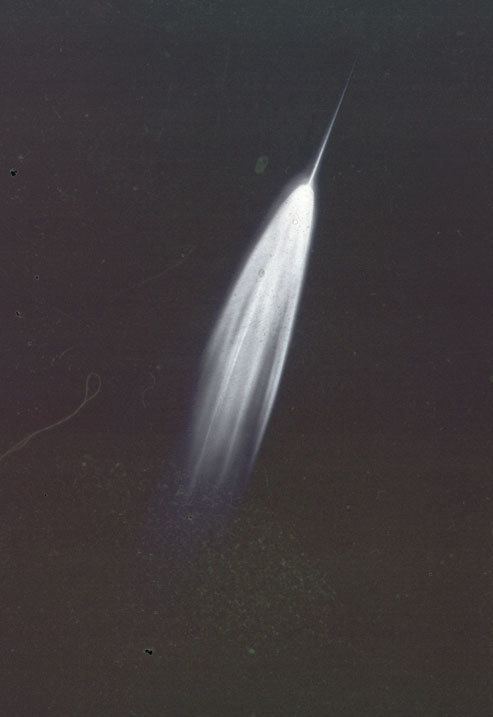
In November 1956, a double astrograph at the Uccle Observatory in Brussels was being used for routine investigation of minor planets. On November 8, 1956, the Belgian astronomers Sylvain Arend and Georges Roland discovered a comet on their photographic plates. At that time the comet was at visual magnitude 10, with a strong central condensation and a short tail. The early discovery of this comet allowed observing programs and equipment to be prepared well in advance.

The orbital elements for this comet were computed by Michael P. Candy, who predicted perihelion passage on April 8, 1957. As the comet was already well developed, he predicted that the object would present a prominent display during the month of April in the northern hemisphere. In early December the comet was 2.5 AU from the Sun and 1.7 AU from the Earth. It was in the constellation Pisces until February, when it reached magnitude 7.5–8.
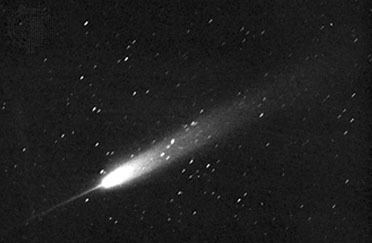
During the April perihelion passage, the tail of the comet reached a length of 15° of arc. The appearance of the tail varied, with streamers on April 16 and May 5, and the tail splitting into three beams on the 29th. By April 22 the comet also displayed a prominent anomalous tail (or antitail) spanning 5°. This antitail stretched out to span 12° on April 25, reaching its maximum extent. The antitail had disappeared by April 29.
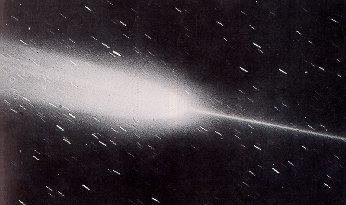
Following perihelion on April 8, the comet began to fade rapidly from its maximum brightness of magnitude -1. At the start of May it was measured at visual magnitude 5.46. By the eighth it had decreased to magnitude 7, well below the sensitivity limit of the unaided human eye. On May 29 it had dropped to magnitude 8.55.
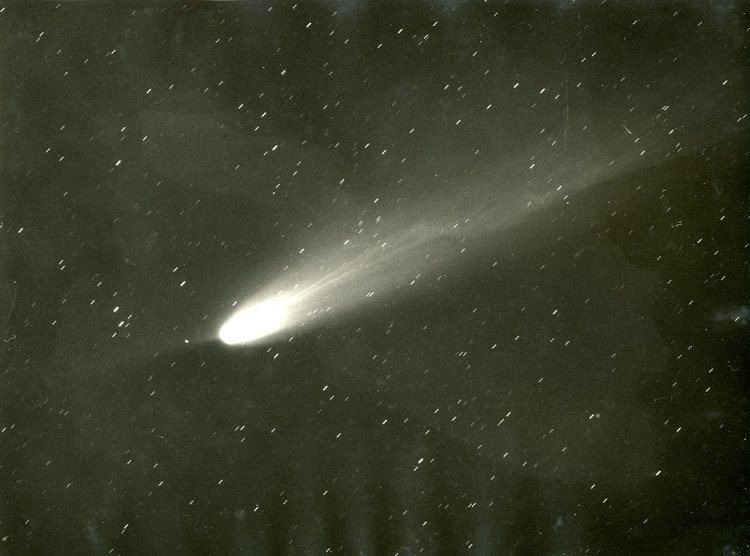
This was the first comet that attempts were made to detect it at various radio frequencies. However, these efforts were unsuccessful. A comet would not be successfully detected in the radio band until the 1973 passage of comet Kohoutek.
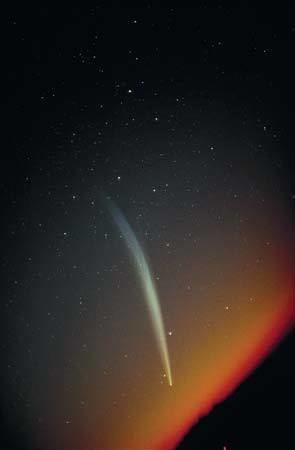
Comet Arend–Roland was the subject of the very first edition of the BBC's long running astronomy program The Sky at Night on April 24, 1957.
Astronomer Carl Sagan relates an anecdote on page 80 of his book Cosmos about being on duty in an observatory near Chicago in 1957 when a late night phone call from an inebriated man asked what was the "fuzzy thing" they were seeing in the sky. Sagan told the man it was a comet (Arend–Roland). The man asked what a comet was, and Sagan answered that it was "a snowball, one mile wide". After a long pause, the man said, quoting Sagan: "Lemme talk to a real 'shtronomer!".
Properties
It was traveling on a hyperbolic orbit, meaning it is traveling fast enough to escape from the Solar System entirely, hence implying it will never be seen again by earthbound observers. Observations of the comet over a period of 520 days allowed precise orbital elements to be computed. However, the distribution of the orbital elements showed a wavy pattern that suggested a non-gravitational influence. Alternatively, the comet may have originated from interstellar space rather than from the Oort cloud. When an orbital solution is computed that includes non-gravitational forces that vary as the inverse square of the heliocentric distance, somewhat different values are derived. (See the Marsden (1970) column in the table below.)
At perihelion, the comet was emitting an estimated 7.5 × 104 kg/s of dust and was releasing roughly 1.5 × 1030 molecules/sec gas molecules. It is believed that an outburst of dust occurred on April 2, six days before perihelion. The antitail was formed from particles released between February 6 and March 1, 1957. Estimates of the total amount of dust released into the zodiacal cloud range from 3 × 108 to 5 × 1010 kg.
